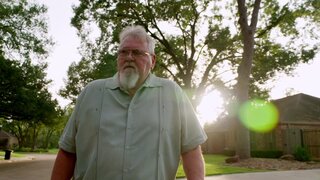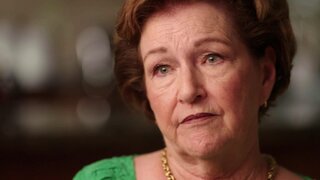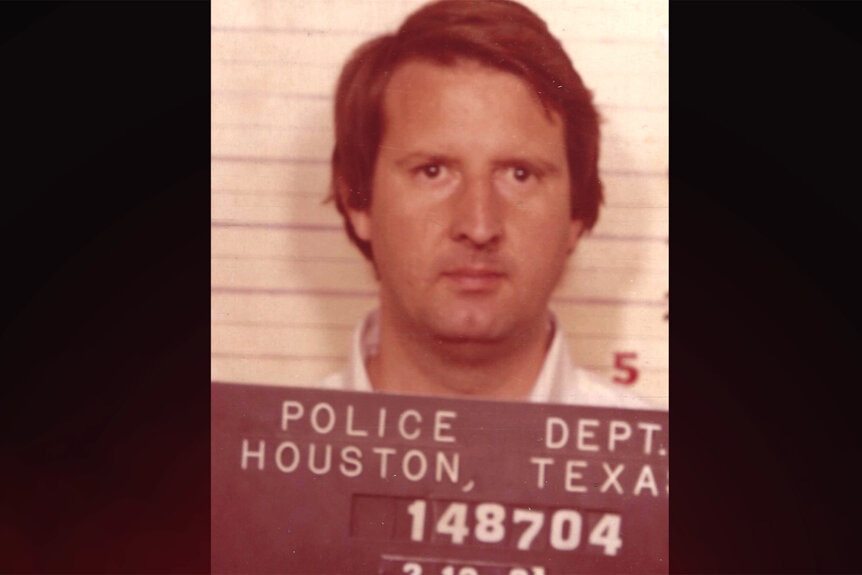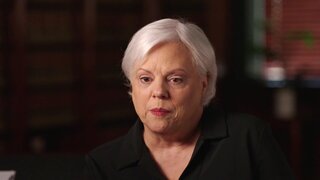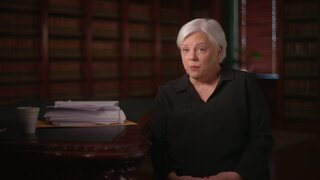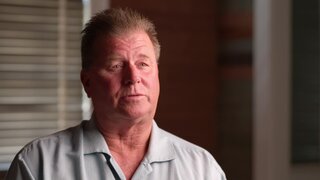Create a free profile to get unlimited access to exclusive videos, breaking news, sweepstakes, and more!
How One Tenacious Houston Detective Untangled the 1979 Murders of Couple, 14-Month-Old Son
Houston Police Sgt. Johnny Bonds learned a woman's 1975 death was possibly staged as a suicide, but only after tasked to solve the 1979 Wanstrath family murders.
One detective with the Houston Police Department made it his life’s mission to solve a shocking triple homicide in Texas, discovering another related murder along the way.
On July 6, 1979, Sgt. Johnny Bonds for H.P.D.’s homicide division was called to the home of John and Diana Wanstrath, a beloved couple who’d been married for 10 years. At the time, the family’s housekeeper received no answer at the door and, upon a peek through the window, found the couple slumped over in the living room.
Bonds told Prosecuting Evil with Kelly Siegler — airing Saturdays at 8/7c on Oxygen — that the husband and wife had been shot in the head, likely about 12 hours before police arrived on the scene.
The long-time investigator grew teary and emotional when recalling walking down the hallway to find the Wanstraths’ 14-month-old son, Kevin Wanstrath. The baby was face-down in his crib and surrounded by stuffed animals, having sustained a fatal gunshot wound to the back of the head.
RELATED: Men Confess to 1998 Murder of Vulnerable Texas Teen "Basically Used For Target Practice"
“Except for the blood, you’d think this was just a baby sleeping,” a crying Bonds told Prosecuting Evil. “It was one of those things I wished I couldn’t see.”
John and Diana Wanstrath's Family Interrogated
According to Houston Post reporter Rick Nelson, John Wanstrath was a successful oceanographer, while Diana was an “exuberant socialite,” both proud parents of their adopted son, Kevin.
Family friend Ellen Davidson described John as a “delightful and intelligent person,” adding that “Diana loved him very much.” In fact, Sgt. Bonds also said neighbors had not one bad word to say about the Wanstraths, leaving detectives puzzled.
At the scene, there were no signs of forced entry or anything amiss to indicate robbery as the motive. A lack of a firearm in the house ruled out any theories of a murder-suicide in Sgt. Bonds' opinion.
Sgt. Bonds wondered if greed was a motivating factor for the killer or killers, citing the Wanstrath’s $1 million home (worth a little more than $4 million today). He administered polygraph tests to all of John’s relatives and asked them about their whereabouts around the time of the triple homicide.
All of them passed, according to Sgt. Bonds.
He then began to look at Diana’s brother, Markham Duff-Smith, who was also asked to take a lie detector test. Duff-Smith claimed he was at home with his wife, Cindy. However, he was unable to pass the polygraph.
“His attitude was just wrong, and Markham, his [poly]graph was all over the place,” Bonds told Prosecuting Evil. “At this point, my number one suspect for the murder of the Wanstrath family is Markham Duff-Smith.”
However, there wasn’t enough to charge Duff-Smith with the murder.
The Wanstrath murders officially ruled a murder-suicide
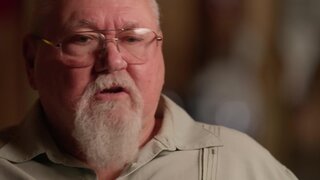
Seven months later, in May 1980, renowned medical examiner Dr. Joseph Jachimczyk, with the help of psychologist Dr. Thomas Welu, released the autopsy results following a “psychological autopsy,” defined by Prosecuting Evil as an “investigation into a deceased person’s mental state and life events to determine cause of death.”
“I never heard of this sh-t,” even Prosecuting Evil’s Kelly Siegler confessed about the contemporaneous procedure, which had already been used in bigger cities.
Since an adult magazine and a sex toy were found at the Wanstrath home — then believed to belong to Diana — authorities concluded Diana killed her husband and son before taking her own life for fear of people learning she was gay, a theory that was reported in the press but remains unsubstantiated today.
Sgt. Bonds called the notion “ridiculous,” but the murder-suicide ruling stayed the same.
“How do you kill yourself and then hide the gun?” Bonds wondered.
However, due to Jachimczyk and Welu’s influence, Bonds’ captain transferred Bonds to Internal Affairs, where Bonds continued to work the case with the help of Internal Affairs Sgt. Dan McAnulty.
“It’s really crazy and really sad how often egos can affect the case,” said Siegler.
Authorities also looked into Diana’s alleged history of depression, citing the 1975 suicide of her mother, Gertrude “Trudy” Zabolio.
A Look into Markham Duff-Smith and Walt Waldhauser
With a green light from higher ups, Bonds kept digging into the case, finding that siblings Diana and Duff-Smith had both inherited about $100,000 from Zabolio’s passing four years earlier. Just six months before the triple murder, the Wanstraths revised their will so that anything they had would go to their adopted son, Kevin.
But in the event of Kevin’s death, Markham Duff-Smith stood to inherit the Wanstrath estate.
In the summer of 1980, about one year after the tragedy, Duff-Smith and his close friend, Walt Waldhauser, left their respective wives and moved into a mansion together. Waldhauser’s then-wife, Debbie Waldhauser, agreed to tell Bonds what she knew if Bonds helped her gain custody of their son amidst a contentious custody battle in court.
The determined detective agreed, and in exchange, Debbie supplied several letters written to Waldhauser from Allen Janecka, a man described by Sgt. McAnulty as “a rougher character.” Janecka was also described as an avid coin collector, which rang familiar to those close to the case.
Just weeks after the Wanstrath murders, an anonymous caller placed a call to The Houston Post reporter Rick Nelson, claiming the purported suicide of Trudy Zabolio was actually a murder carried out by a coin dealer.
RELATED: Community Activist Draws Confession From Man Suspected of Ex's Gruesome 2007 Murder
“The anonymous caller said that they didn’t know about the Wanstrath murders,” Nelson told Prosecuting Evil. “But Diana’s mother’s death four years earlier was not a suicide.”
Investigators learned that in 1979, Janecka and a man named Richard Bufkin were involved in a 1970s murder of a local, small-time marijuana dealer. It was a crime for which Bufkin was convicted and sentenced, while Janecka was allowed to walk free.
Resentful of the turnout, Bufkin was more than happy to turn on Janecka, claiming both were approached to kill off a family.
“That’s the day everything fell into place,” an emotional Bonds told Prosecuting Evil. “That’s the day I found out who my killer was.”
The Arrest of Allen Janecka
Investigators learned Janecka and his new girlfriend, Karen, were spending time in Atlanta. Houston authorities teamed up with Georgia police to survey the suspect’s movements. Ultimately, word got around that Karen told an ex-cop at a supper club that Janecka gave her a gun, with Janecka claiming he used it to kill a family in Houston.
Detectives confronted Karen, and the woman freely supplied officers with the gun in question — a rare .22-caliber magnum pistol that would transpire to be the gun used in the killing of baby Kevin Wanstrath.
It was enough to arrest Janecka without incident in Houston in connection with the Wanstrath murders before Sgt. McAnulty could escort him to jail.
“On the way up, he says, ‘Look, I wanna talk to you,’” McAnulty told Prosecuting Evil. “’I’m not gonna go down by myself on this.’”
Janecka pointed to Duff-Smith’s friend, Walt Waldhauser. Waldhauser was soon tied to the crimes when police found he wired Janecka money via Western Union, and Waldhauser’s fingerprints were on the receipt.
Waldhauser was the second to be arrested in the Wanstrath case.
Prosecutor Ted Poe for the Harris County District Attorney’s Office worked to cut a deal with Waldhauser: a 30-year sentence for the murders of John, Diana, and Kevin Wanstrath in exchange for his testimony against Markham Duff-Smith, whom investigators believed was behind the murders.
“Nobody liked it because Walt Waldhauser was as bad as any person I have ever come across,” Poe told Prosecuting Evil.
“It was sort of like making a deal with the devil,” McAnulty echoed.
According to Allen Janecka, Duff-Smith approached his sister and brother-in-law about possibly building a home in their area. Duff-Smith introduced Janecka to the couple as a contractor, but then Janecka invited Waldhauser to come along and meet the Wanstraths.
During the meeting at the Wanstrath home, Janecka walked behind John Wanstrath and shot him twice on the top of the head, according to Janecka’s statements, which were audio recorded and published by Prosecuting Evil.
“From there, [Waldhauser] sprayed Mrs. Wanstrath in the face with mace and then grabbed ahold of her and threw her down,” said Janecka. “Which then, at that time, I walked over and put the gun to the side of her head and shot it.”
Janecka said his mind was “completely blank” when he obeyed Waldhauser’s orders to kill the child.
“Looking at the little fella in the crib, I raised the gun and pulled the trigger,” Janecka admitted.
When it came time for Waldhauser to confess to his role in the crimes, he told Sgt. Bonds he had information on the alleged murder of Diana Wanstrath’s mother, Gertrude “Trudy” Zabolio, in 1975.
The Murder of Gertrude “Trudy” Zabolio
According to Sgt. Bonds, Waldhauser claimed Janecka and someone named Paul MacDonald murdered Zabolio and staged the scene to look like a suicide. MacDonald was a friend of Waldhauser’s, and Waldhauser asked MacDonald if he knew anyone who would kill Zabolio on behalf of a friend.
According to Waldhauser, the request came from Zabolio’s son, Markham Duff-Smith.
MacDonald asked Janecka, and Janecka agreed to take the job, according to Prosecutor Poe. MacDonald drove Janecka to the Zabolio home, where Janecka disappeared for about an hour.
“He had her write some notes like she was committing suicide, and he placed them there around her room,” Poe told Prosecuting Evil. “And then he strangled her to death.”
According to Poe, the medical examiner at the time ruled Zabolio had “choked herself to death.”
“Back then, forensics was not nearly as good and evolved as what we have today,” said Kelly Siegler.
Janecka and MacDonald proved to Duff-Smith that they carried through with the murder by producing the victim’s driver’s license, which was taken from the Zabolio home, according to Bonds. Janecka, however, denied strangling Zabolio to death. While Bonds and McAnulty believed that Janecka was instrumental in Zabolio’s murder, they were never able to prove it.
For his role, MacDonald was handed a 16-year sentence.
Around this time, the medical examiner amended the postmortem reports so that the Wanstraths’ manner of death was homicide.
Markham Duff-Smith Goes on Trial
Despite a lack of evidence for Janecka's involvement in Zabolio's murder, there was enough to charge him with the murder of baby Kevin Wanstrath due to his girlfriend possessing the murder weapon and Janecka’s own confessions.
Meanwhile, Markham Duff-Smith was arrested for the capital murder of his mother, but not for the murders of his sister, brother-in-law, and nephew.
“They could have charged him with any of the murders, but you don’t want to put all your eggs in one basket; you want to pick your best case and try that one,” said Kelly Siegler. Should a defendant be acquitted or receive a low sentence, prosecutors could always use the other cases as backups.
In April 1981, Janecka was found guilty of capital murder and sentenced to die by lethal injection.
Duff-Smith was also convicted of capital murder for the death of his mother. A jury only took about 12 minutes to sentence him to death.
“It was poetic justice,” said family friend Ellen Davidson. “It was relief… I just remember being so ecstatic that we were getting what we were getting.”
Fourteen years after the Wanstrath family murders, Duff-Smith confessed to ordering the Wanstraths' deaths, just moments before he was executed on June 29, 1993. Duff-Smith said he was “internally sorry for it,” according to reporter Rick Nelson.
Allen Janecka died by execution in 2003.
Walt Waldhauser is the only living suspect, and though he was released from prison early, he was later sentenced to serve five life sentences for money-related crimes, according to CBS Houston affiliate KHOU. Bonds returns to the parole board yearly to ensure Waldhauser is never released from prison.
Bonds went on to receive honors for his dedication to the Wanstrath/Zabolio case and retired in 2008 after 41 years of police service.
“I wept a lot over this case,” said Bonds. “There was pressure to let up, to quit, but I couldn’t live with myself to let that happen.”
Reporter Rick Nelson wrote the book The Cop Who Wouldn’t Quit about Johnny Bonds and his commitment to the case.
Watch all-new episodes of Prosecuting Evil with Kelly Siegler, Saturdays at 8/7c on Oxygen.
